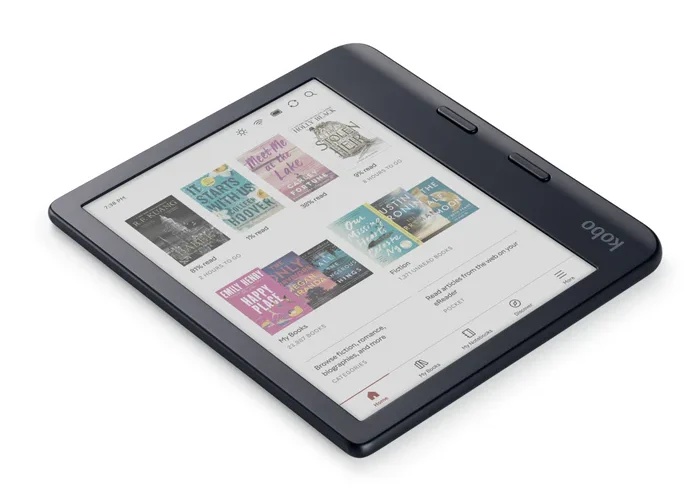Kobo users have long been asking for a better way to read web articles on their e-readers. That has now become possible as Kobo Instapaper integration has officially been rolled out. This will make it easier than ever to save articles from the web and then read them on an e-ink screen. The move rivals the ‘Send to Kindle’ feature from Amazon, which too offers a similar functionality.
However, while the update is a win for many, things haven’t been smooth sailing across the board. Reports are coming in claiming the update is creating some issues on older Kobo e-readers. Needless to say, the ordeal has left many a loyal user frustrated.
Let’s dive into what this integration means, how it works, and why some devices are running into trouble.
What the Kobo Instapaper Integration Means
Instapaper is one of the most popular read-it-later services, allowing users to save articles, blog posts, and even long-form essays from the web and revisit them later in a clean, distraction-free format.
Until now, Kobo users had to rely on awkward workarounds — third-party tools, sideloading, or clunky conversions — to get Instapaper content onto their e-readers. The new integration changes all that.
With the latest Kobo software update:
- Users can link their Instapaper accounts directly to their Kobo device.
- Saved articles sync automatically, appearing in a dedicated Instapaper section.
- Content is formatted for the e-ink display, making long reads more comfortable.
This effectively transforms Kobo devices into more versatile reading tools. Instead of being limited to e-books and PDFs, readers can now catch up on their favorite articles without staring at a glowing phone or computer screen.
How it Works in Practice
Setting up Instapaper on Kobo is straightforward:
- Update your Kobo device to the latest firmware.
- Navigate to the new Instapaper section under settings.
- Sign in with your Instapaper account credentials.
- Sync your device and your saved articles will appear within seconds.
The articles retain their clean formatting, with customizable font sizes, margin controls, and dark mode (where supported). It feels very much like reading an e-book, except the content is derived from the web.
For professionals, students, and knowledge workers who curate long reading lists, this is a productivity boost. No more juggling phone screens or worrying about distractions. Kobo now doubles as an offline reading companion.
Why This Matters in the Bigger Picture
Amazon’s Kindle ecosystem has long dominated the e-reader market. Kindle’s “Send to Kindle” feature makes it trivial to send articles or documents directly to the device. The Kobo Instapaper integration is a direct response, giving readers more choice and reinforcing Kobo’s identity as a flexible, reader-friendly platform.
It also signals Kobo’s commitment to third-party partnerships. By collaborating with Instapaper, Kobo positions itself as the more open alternative to Kindle rather than locking users into a proprietary system. For readers who value independence, this could be a deciding factor.
The Flip Side: Trouble for Older Kobo Devices
But there’s a downside. Alongside the praise for Kobo Instapaper integration, Kobo’s support forums and e-reader communities have lit up with complaints: the new software update is causing older Kobo devices to crash or even stop functioning altogether.
Affected models reportedly include:
- Kobo Aura (and earlier generations)
- Some Kobo Glo and Kobo Touch devices
- Select first- and second-generation models still in circulation
The issues range from:
- Frequent freezes and crashes when trying to open books.
- Devices stuck in boot loops, unable to reach the home screen.
- Laggy performance, even after factory resets.
- Failed updates that render the device almost unusable.
For long-time Kobo fans who have cared for their devices for nearly a decade, this comes as a bitter surprise. Many of these e-readers are still perfectly serviceable for basic reading — or at least they were, until the update.
Why Is This Happening?
While Kobo has not yet issued an official statement, there are some likely explanations:
- Firmware strain: The latest software is optimized for newer hardware, which may leave older processors and memory struggling to keep up.
- Integration overhead: Features like Instapaper integration and updated sync functions may simply be too resource-intensive for outdated devices.
- Planned obsolescence concerns: Some users worry Kobo is nudging readers toward upgrading, though, whether intentional or not, the effect is the same.
This is a classic tech dilemma: introducing powerful new features often comes at the expense of supporting legacy hardware.
What Users Can Do
If you own an older Kobo device, here are some practical steps:
- Hold off on updating. If your device is still running well, consider disabling Wi-Fi temporarily to prevent automatic updates.
- Check Kobo forums for any workarounds or official fixes. Sometimes rolling back firmware is possible, though it requires technical know-how.
- Wait for patches. Kobo may issue a hotfix if the issue is widespread. Keeping an eye on official announcements is key.
- Backup your library. Always make sure your purchased books are synced to the cloud or backed up safely.
The Balance Between Progress and Compatibility
The Kobo Instapaper integration is undeniably a step forward for e-reader usability. But the hiccups on older devices highlight a larger challenge in the tech industry: how to push innovation without alienating users who depend on older hardware.
For some, this update is a dream come true. For others, it’s a frustrating reminder that their trusted Kobo might be reaching the end of its life.
What This Means for Kobo’s Future
Looking ahead, the update sends two clear signals about Kobo’s priorities:
- Openness and versatility: By embracing Instapaper, Kobo strengthens its reputation as the flexible alternative to Kindle.
- A push toward newer devices: Whether by design or by circumstance, Kobo may be nudging users toward upgrading to more powerful models like the Kobo Libra Colour or Kobo Elipsa 2E, which can handle these integrations with ease.
For the broader e-reader market, this shows that competition is alive and well. Amazon’s Kindle is no longer the only device offering seamless web-to-reader experiences. And Kobo’s willingness to experiment may inspire even more innovation.
Final Thoughts
The Kobo Instapaper integration is one of the most exciting software updates Kobo has rolled out in years. It bridges the gap between e-books and the endless stream of online writing, making it easier to read thoughtfully, distraction-free, on e-ink screens.
At the same time, the Kobo Instapaper update is a reminder that not all progress comes without costs. Older devices are struggling, and some readers are left wondering if they need to upgrade sooner than planned.
For new and recent Kobo owners, this is a huge win. For longtime users with legacy devices, caution is advised until Kobo addresses the stability issues.
Either way, the message is clear: Kobo isn’t standing still. And with Instapaper now in the mix, the company is carving out a stronger place in the e-reader ecosystem — even if the journey is proving a little bumpy.


